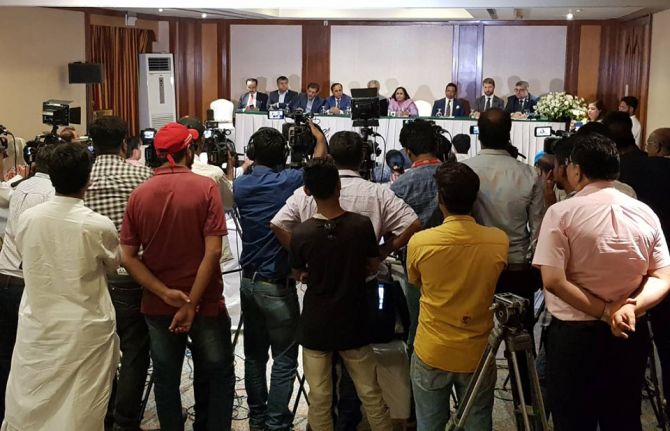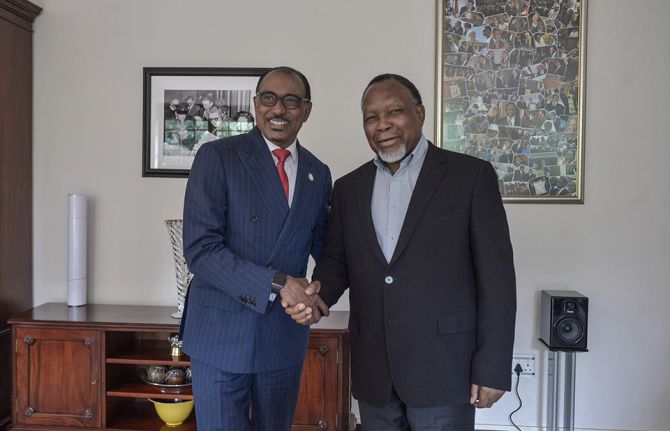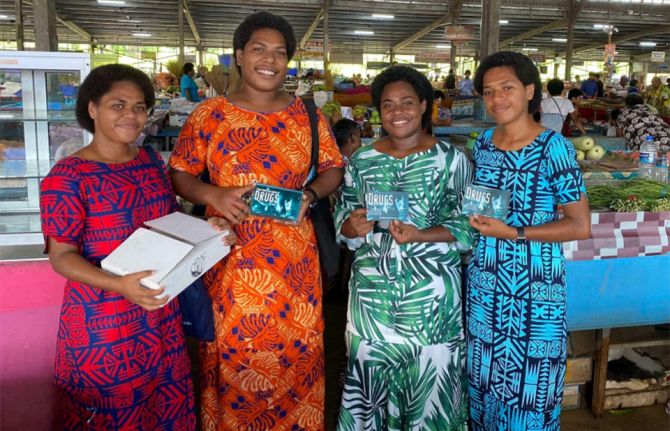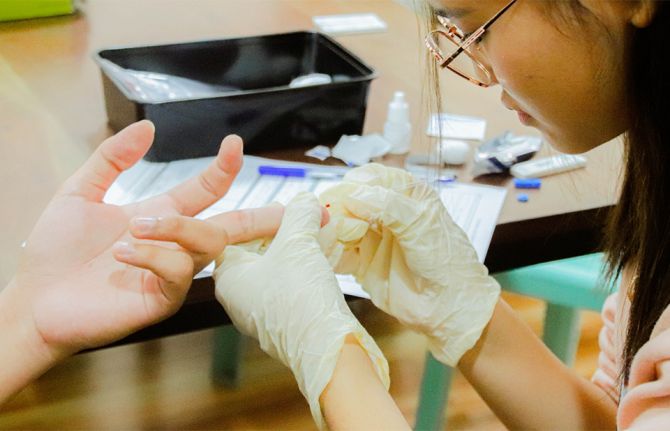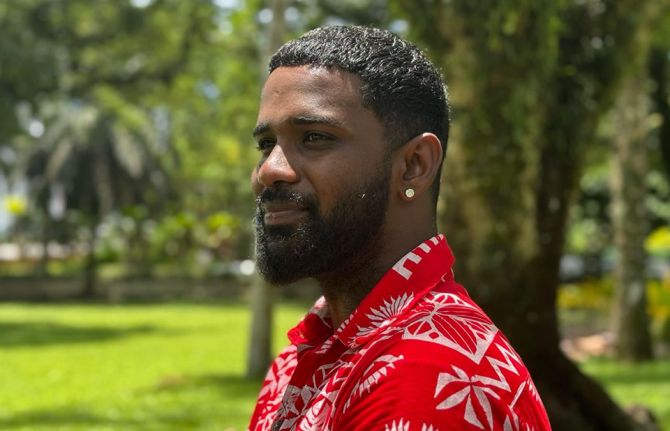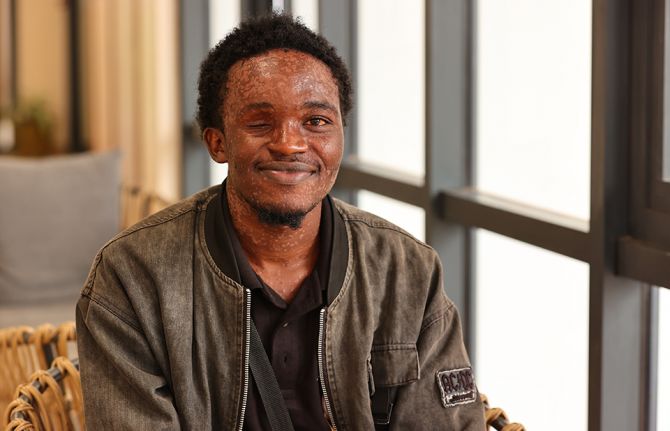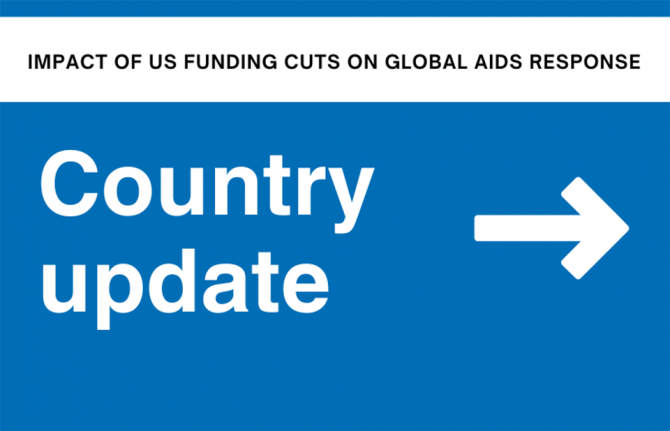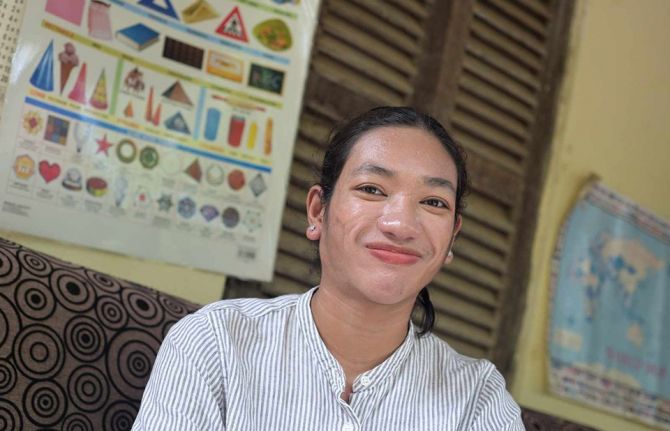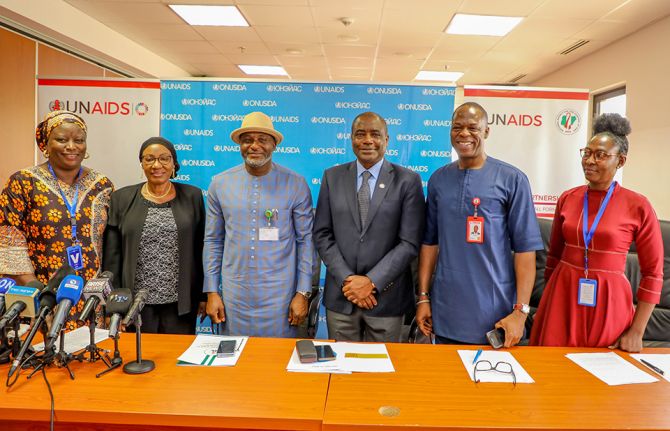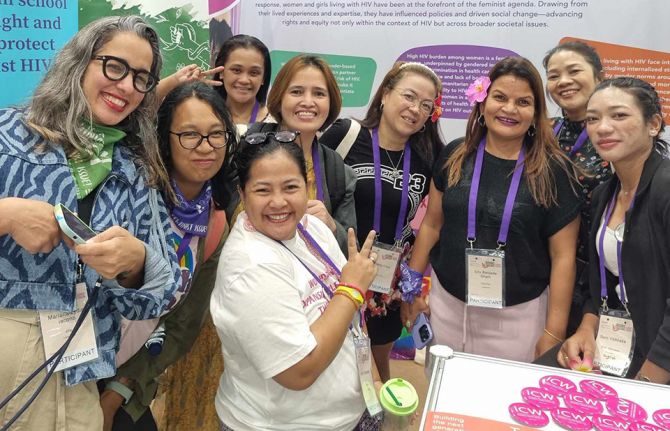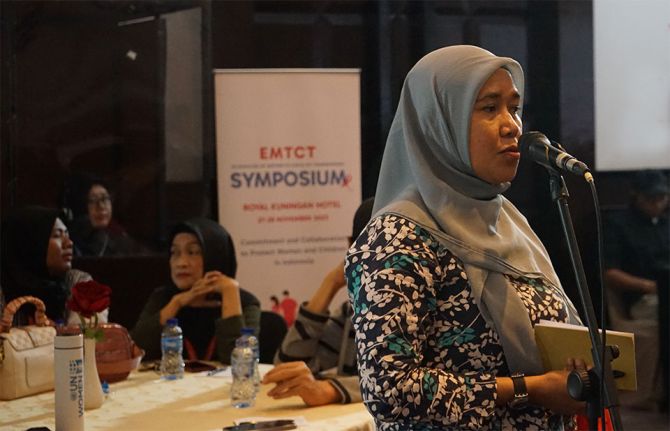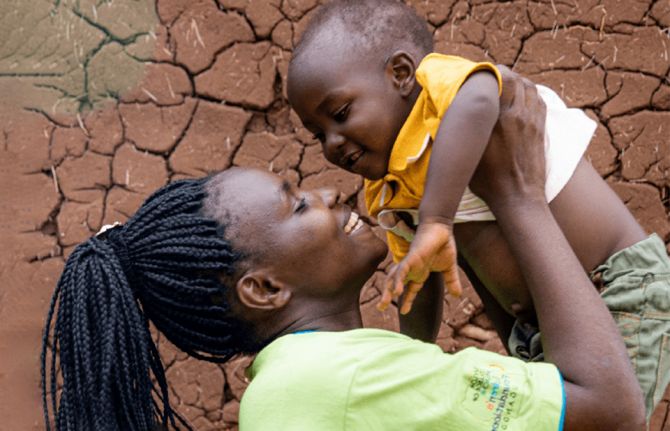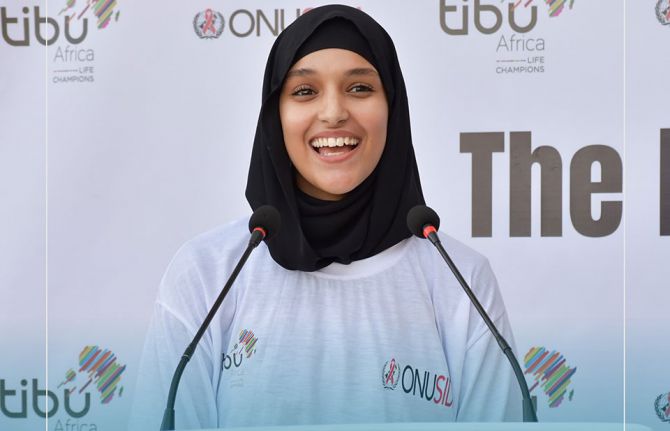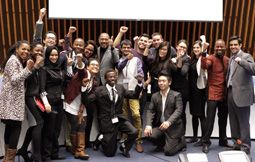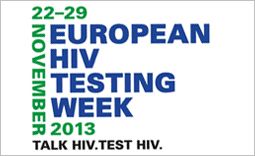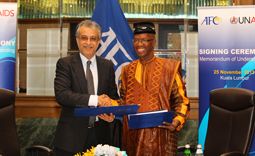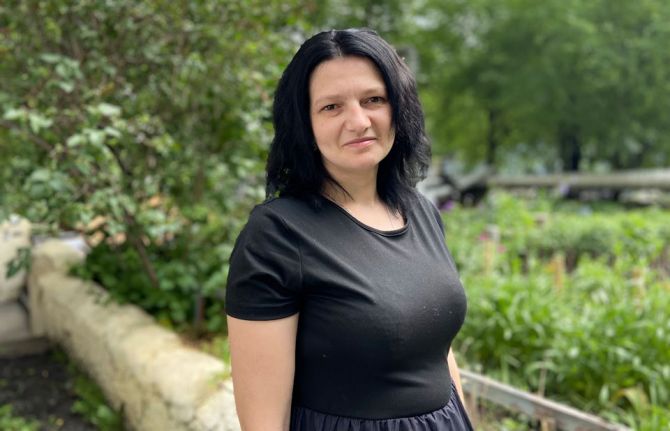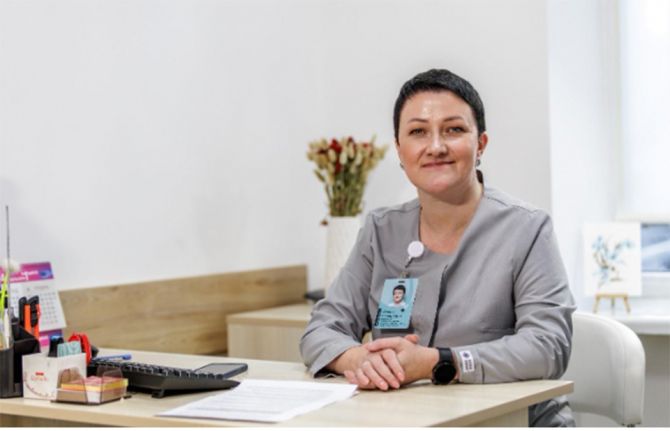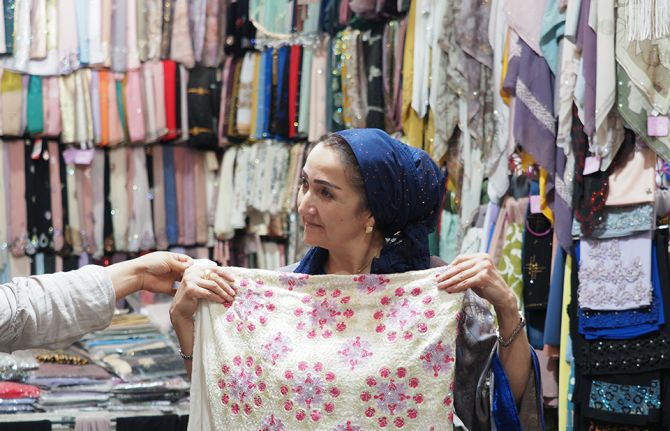
Feature Story
Health 8 group meet to discuss maximizing health outcomes with available resources and getting “more health for the money”
23 February 2011
23 February 2011 23 February 2011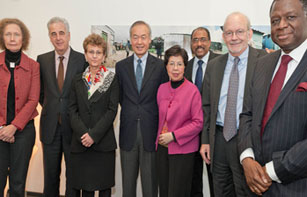
Ms Helen Evans Interim Chief Executive Officer, Global Alliance for Vaccines and Immunisation (GAVI); Dr Michel Kazatchkine Executive Director, Global Fund to Fight AIDS, Tuberculosis and Malaria (GFATM); Ms Tamar Manuelyan Atinc Vice President, Human Development Network, World Bank; Dr Tachi Yamada President, Global Health Program, Bill & Melinda Gates Foundation; Dr Margaret Chan Director-General, World Health Organization (WHO); UNAIDS Executive Director Michel Sidibé; Mr Anthony Lake Executive Director, United Nations Children’s Fund (UNICEF); Mr Babatunde Osotimehin Executive Director, United Nations Population Fund (UNFPA).
The Health 8 group gathered at the UNAIDS Headquarters in Geneva on Wednesday 23 February to reflect and strategize on one of most pressing issues affecting the health of the world’s population—maximizing health outcomes with available resources.
The Geneva meeting, convened in this occasion by UNAIDS Executive Director Michel Sidibé, focused on how to get “more health for the money.” Participants held discussions under three main topics: the UN Secretary-General’s Global Strategy for women’s and children’s health, the role of multilateralism in the new economic order, and the provision of technical support for capacity building.
The Health 8 (H8) is an informal group of eight health-related organizations comprising WHO, UNICEF, UNFPA, UNAIDS, GFATM, GAVI, Bill & Melinda Gates Foundation, and the World Bank. It was created in mid-2007 to stimulate a global sense of urgency for reaching the health-related Millennium Development Goals and has focused on better ways to speed up efforts to bring lifesaving-health improvements to people worldwide.
Related

Feature Story
“Get the Facts, protect yourself”: World-class cricketers champion HIV campaign at 2011 Cricket World Cup
25 January 2011
25 January 2011 25 January 2011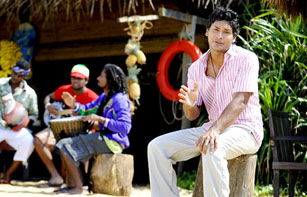
Sri Lankan cricket player Kumar Sangakkara in a new public service announcement that encourages young people to inform themselves about HIV
Credit: International Cricket Council (ICC)
They may be rivals on the field of play, but international cricketing stars Virender Sehwag and Kumar Sangakkara have joined together to support a new “Think Wise” campaign ahead of the ICC Cricket World Cup 2011.
The players feature in a public service announcement—released today and available to all broadcasters across the globe—that encourages young people to inform themselves about HIV, take appropriate action to prevent HIV infection, and stand together against HIV-related stigma and discrimination. The new campaign is led by the International Cricketing Council (ICC), in partnership with UNAIDS and UNICEF.
“The ICC Cricket World Cup 2011 provides an opportunity to use our status as cricketers to deliver important social messages to the millions of supporters who will be watching the tournament across the world,” said India’s Virender Sehwag. “I hope this public service announcement can encourage young people to get the facts and protect themselves from HIV.”
The ICC Cricket World Cup 2011 provides an opportunity to use our status as cricketers to deliver important social messages to the millions of supporters who will be watching the tournament across the world
Virender Sehwag, India cricket team
Sehwag and Sangakkara have been active supporters of the ICC partnership since it was formed in 2003, visiting HIV projects at ICC events and promoting HIV prevention and stigma reduction messages. Other cricketing stars in the partnership include Graeme Smith (South Africa), Shakib-Al-Hasan (Bangladesh) and Ramnaresh Sarwan (West Indies).
“It is important that young people around the world have access to the right information to help them make informed decisions and break down stigma and discrimination,” said Sri Lanka’s Kumar Sangakkara. “Through this public service announcement, I want to help stop the spread of HIV.”
A number of other “Think Wise” activities are planned during this year’s Cricket World Cup, which runs from 19 February through 2 March, with matches across India, Bangladesh and Sri Lanka. Cricket players will participate in a series of interactions focused on HIV prevention with local community groups in the three host countries. Cricket teams will wear red ribbons on their shirts in key matches during the competition and HIV prevention messages will be promoted at venues on all match days.
Notes to editors
The public service announcement is available to broadcasters, for editorial use, from an ICC ftp site. Visit via Windows Explorer ftp://internationalcricketcouncil.net/ThinkWise.
Username: thinkw-read
Password: icchiv_123

Feature Story
UNICEF Executive Director launches innovative approach to prevent mother-to-child HIV transmission in Kenya
29 October 2010
29 October 2010 29 October 2010A version of this story has been published at unicef.org

Credit: UNICEF/NYHQ2010-1057/Susan Markisz
UNICEF Executive Director Anthony Lake joined the Government of Kenya and other partners on 29 October to role out an innovative approach to prevent the transmission of HIV from mothers to their babies (PMTCT). The initiative includes a combination of activities and supplies including a “Mother-Baby-Pack” of antiretroviral drugs and antibiotics, which women can easily administer at home.
The “Mother-Baby-Pack” is part of the government’s Maisha mother-to-child transmission free Zone Initiative. This pioneering programme is designed to help virtually eliminate mother-to-child-transmission of HIV and paediatric AIDS by 2013 in Nyanza and Rift Valley provinces, where about half of all Kenyan children with HIV live, and by 2015 in the entire country. Without treatment, around half of all babies born with HIV will die before their second birthday
Mr Lake commended the Kenyan government for its commitment to take ground-breaking steps to expand and strengthen the quality of PMTCT services. “Maisha means ‘Life’ in Kiswahili, and I can think of no better way to describe a programme with the potential to save so many lives,” he said. “The Maisha Initiative is a significant step forward towards our common goal of virtually eliminating mother to child transmission in Kenya.”
Maisha means ‘Life’ in Kiswahili, and I can think of no better way to describe a programme with the potential to save so many lives
Anthony Lake, UNICEF Executive Director
The roll-out in Kenya of the “Mother-Baby-Pack” marks the beginning of a phased implementation in four countries, including Cameroon, Lesotho and Zambia. It is scheduled to run until mid-2011. During this initial phase, UNICEF and its partners will closely monitor the acceptance of the pack by women, as well as the quality of supply and distribution.
The packs were developed by UNICEF in collaboration with the World Health Organization (WHO), UNITAID, and other partners. Health workers in antenatal clinics will distribute them to pregnant women living with HIV, but who do not yet need antiretroviral treatment for their own health. The initiative is designed to reach pregnant women who have tested positive for HIV, but who might not otherwise return to a clinic following their diagnosis.
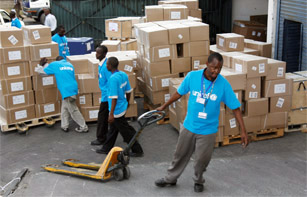
Mother-Baby Packs arrive in Nairobi. They are then loaded onto a UNICEF truck for distribution to other parts of Kenya. Credit: UNICEF Kenya/2010/Joseph Munga
The initiative is supported financially by a number of partners including the US Government, UNICEF National Committees, the Clinton Health Access Initiative (CHAI) and the Mothers-to-Mothers (M2M) programme.
While adult HIV prevalence in Kenya has declined steadily, there are still some 22,000 new infections annually among infants through mother-to-child transmission. Overall, an estimated 1.4 million people are living with HIV in the country, including around 81,000 pregnant women.
Related

Feature Story
Expanding HIV services in post-conflict Liberia
20 October 2010
20 October 2010 20 October 2010
Photo: UNAIDS Executive Director Michel Sidibe, HRH Princess Mathilde of Belgium and mother of triplets at JFK hospital in Monrovia, Liberia. Credit: UNAIDS
UNAIDS Executive Director Michel Sidibé and UNAIDS and UNICEF Goodwill Ambassador HRH Princess Mathilde of Belgium, wrapped up a joint three-day mission to Liberia, which as a post-conflict country is working to expand its HIV services.
“It is a critical moment for Liberia. If we join together we can put the brakes on new HIV infections,” said Mr Sidibé. “But if we miss this opportunity the AIDS epidemic could regain momentum and more lives will be lost.”
During their trip, Mr Sidibé and HRH Princess Mathilde visited several health and educational facilities which are leading the way in the country’s re-energized AIDS response.
It is a critical moment for Liberia. If we join together we can put the brakes on new HIV infections
Michel Sidibé, UNIADS Executive Director
One site they visited was the JFK Hospital which is located in the capital city of Monrovia and offers a range of integrated HIV and maternal health services. It provides antenatal care to approximately 50 pregnant women each month, including voluntary HIV testing and counselling and services to prevent mother-to-child transmission (PMTCT) of HIV. On average, about 200 people visit the hospital’s antiretroviral therapy clinic every week for treatment and care.
Challenges of delivering HIV services in rural settings
As well as visiting hospitals in the capital, the group also paid a visit to the Phebe Hospital, a rural health facility located in the central Liberian county of Bong that provides a range of health services to around 329 000 people in four different counties. It is considered a leading provider of HIV services including antiretroviral treatment, voluntary HIV testing and counselling, PMTCT services and treatment for tuberculosis. A total of 67 people living with HIV are receiving services and 35 are on treatment.
Education is a key issue; boys and girls should be educated to show respect for one another.
HRH Princess Mathilde
However rural health facilities often face particular problems in delivering health services. For example two weeks ago the machine measuring CD4 counts, which helps monitor the progress of the virus, broke down and the hospital is unsure of when it can be fixed.
“We face many challenges. We have problems with follow up and we lose about a fifth of people who test HIV positive,” said Dr Garfee Williams, the Medical Director of Phebe Hospital. “This is due to many reasons—there are of course problems of discrimination – but also a lack of resources. We just don’t have the staff to go out into communities and provide the necessary care.”
Liberia has a generalised AIDS epidemic and latest data shows that there were around 35 000 people living with HIV at the end of 2007 and 2 300 people died of an AIDS-related illness in the same year.
Related

Feature Story
Liberia launches national agenda to improve the health of women and girls
18 October 2010
18 October 2010 18 October 2010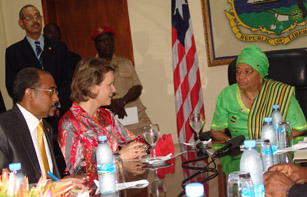
Liberian President Ellen Johnson Sirleaf, HRH Princess Mathilde of Belgium, and UNAIDS Executive Director Michel Sidibé in Monrovia 18 October, 2010. Credit: UNAIDS
Following a 14-year civil war, Liberia has faced a host of post-conflict challenges that have increased the vulnerability of women and girls to HIV infection, including gender-related violence, poverty, population displacement and limited access to education and health services.
Women and girls represent 58% of the estimated 36 000 people living with HIV in Liberia. HIV prevalence among young women aged 15-24 is about three times higher than that of young men.
Liberian President Ellen Johnson Sirleaf—Africa’s first democratically-elected female head of state—today unveiled a national roadmap for improving the health and well-being of women and girls. Launched in collaboration with HRH Princess Mathilde of Belgium, a Goodwill Ambassador for UNAIDS and UNICEF, Liberia’s new Agenda for accelerating country actions for women, girls, gender equality and HIV aims to:
- Strengthen data collection and analysis to better understand the impact of the HIV epidemic on women and girls in Liberia
- Accelerate access to integrated reproductive and HIV services for women and girls
- Contribute to broader efforts to stop violence against women and girls
Liberia’s national Agenda is based on a global plan developed by UNAIDS and partners to address the gender inequalities and human rights violations that put women and girls at a greater risk of HIV. Speaking at a launch event in Monrovia, President Sirleaf said she was proud that Liberia had been selected as the first country to roll out this national Agenda.
I congratulate President Sirleaf for embracing this Agenda—for recognizing and supporting your most valuable natural resource: women and girls
Michel Sidibé, UNAIDS Executive Director
UNAIDS Executive Director Michel Sidibé, who is on an official visit to Liberia with Princess Mathilde and UNICEF, praised Liberian authorities for placing AIDS and sexual and gender-based violence at the heart of the country’s post-war recovery efforts.
“I congratulate President Sirleaf for embracing this Agenda—for recognizing and supporting your most valuable natural resource: women and girls,” said Mr Sidibé. “Women are the solid centre of human life—of families, communities and care.”
Princess Mathilde focused her remarks on the critical importance of education in solving the nation’s ills. “Education is linked to the well-being of children,” she said. “It gives women the possibility to become economically self sufficient. It gives them the opportunity to decide on matters that concern their own lives. It gives them a voice with which to defend their own interests.”
The three-day joint mission to Liberia, which kicked off today, includes meetings with senior government authorities, associations of people living with HIV, and health and medical providers.
Related

Feature Story
World leaders focus on the elimination of mother-to-child HIV transmission by 2015
21 September 2010
21 September 2010 21 September 2010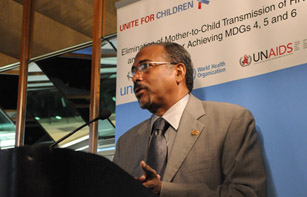
UNAIDS Executive Director Michel Sidibé speaks at UNICEF breakfast. 21 September 2010. Credit: UNAIDS/Hamilton
Virtual elimination of mother-to-child HIV transmission by 2015 and the linkages between Millennium Development Goals 4 (Reduce child mortality), 5 (Improve maternal health) and 6 (Combat HIV/AIDS, malaria and other diseases) were the focus of a working session that took place on Tuesday 21st September in New York as part of a MDGs Summit side event organized by UNICEF, WHO and UNAIDS.
“We must take AIDS out of isolation, leveraging investments in the global AIDS response to support progress across all other MDGs,” said UNAIDS Executive Director Michel Sidibé during his intervention.
Participants to the working session included high level country representatives, heads of international organizations, representatives of civil society and donor government delegates.
HIV remains a leading cause of death among women of reproductive age globally as well as of maternal mortality and under-five mortality in several countries. Although delivery of proven mother-to-child HIV transmission (MTCT) services has effectively eliminated MTCT in high-income countries, every day more than one thousand children in low-and middle income countries are newly infected with HIV via transmission during pregnancy, delivery, and breastfeeding.
Around 430,000 children are born with HIV each year and a new report released last week by WHO, UNICEF, UNFPA and the World Bank shows that despite the 35% decline in maternal morality worldwide since 1990, there has been setbacks in many sub-Saharan African countries, mainly as a result of HIV. In Botswana, maternal mortality rose 133% between 1990 and 2008, in South Africa 80%, and in Kenya 38%. In some countries, more than half of maternal mortality is attributable to HIV, e.g. Botswana (77%), Swaziland (75%), Lesotho (59%), Zimbabwe (53%), and South Africa (43%). These numbers underscore the indivisibility of the MDGs and highlight the links between MDG 5 and 6.
As participants stressed, there is strong consensus among the international community and national governments that scaling up prevention of mother-to-child HIV transmission (PMTCT) is feasible and needs to be accelerated.
UNAIDS identified PMTCT as one of the 10 outcome areas for joint action by the UN Co-sponsors. The UNAIDS Executive Director’s call for virtual elimination has become a rallying point for advocacy, resource mobilization and actions at all levels.
It was noted during the session that while many countries are now showing remarkable progress, intensified efforts are urgently needed to reach all mothers and children with PMTCT services.
Participants agreed that effectively eliminating MTCT will require sustained political leadership, country commitment, and donor support. Achieving the goal of MTCT elimination by 2015 also requires strengthening broader health systems and will both depend upon and contribute to achieving the Millennium Development Goals 4, 5, and 6.

Feature Story
Maternal deaths worldwide drop by a third
15 September 2010
15 September 2010 15 September 2010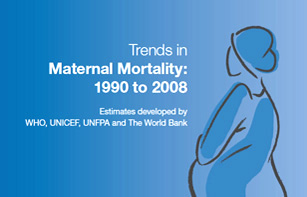
The number of women dying due to complications during pregnancy and childbirth has decreased by 34% from an estimated 546 000 in 1990 to 358 000 in 2008, according to a new report, Trends in maternal mortality, released by the World Health Organization (WHO), the United Nations Children's Fund (UNICEF), the United Nations Population Fund (UNFPA) and the World Bank.
Despite this notable progress, the annual rate of decline is less than half of what is needed to achieve the Millennium Development Goal (MDG) target of reducing the maternal mortality ratio (the number of deaths per 100,000 live births) by 75% between 1990 and 2015. This will require an annual decline of 5.5%: the current average annual decline of just 2.3%.
"The global reduction in maternal death rates is encouraging news," says Dr Margaret Chan, the Director-General of WHO.”No woman should die due to inadequate access to family planning and to pregnancy and delivery care."
For nations with high HIV prevalence, AIDS has become a leading cause of death during pregnancy and after the birth. There is also some evidence that women living with HIV are at greater risk of maternal death. Overall, it was estimated that there were 42 000 deaths due to AIDS among pregnant women globally in 2008. About half of those are estimated to be maternal. The contribution of HIV was highest in sub-Saharan Africa where 9% of all maternal deaths were AIDS-related.
“Integrating HIV services with maternal and sexual and reproductive health services is imperative to stop mothers from dying and babies from being born with HIV,” said Mr Michel Sidibé, UNAIDS Executive Director. “The AIDS movement must be leveraged to achieve reductions in maternal and child mortality.
According to the report pregnant women die from four major causes: severe bleeding after childbirth, infections, hypertensive disorders, and unsafe abortion. Every day, about 1000 women died due to these complications in 2008, more than half in sub-Saharan Africa. The risk of a woman in a low-income country dying from a pregnancy- related cause during her lifetime is about 35 times greater than a woman living in a high-income country.
"To achieve our global goal of improving maternal health and to save women's lives we need to do more to reach those who are most at risk," says Anthony Lake, Executive Director of UNICEF. "That means reaching women in rural areas and poorer households, women from ethnic minorities and indigenous groups, and women living with HIV and in conflict zones."
The new estimates show that it is possible to prevent many more women dying. Countries need to invest in their health systems and in the quality of care.
"Every birth should be safe and every pregnancy wanted,” says Thoraya Ahmed Obaid, the Executive Director of UNFPA.The lack of maternal health care violates women's rights to life, health, equality, and non-discrimination.
UN agencies, donors and other partners have increasingly coordinated their assistance to countries, focusing on those with the greatest burden.
According to Tamar Manuelyan Atinc, Vice President for Human Development at the World Bank, “Given the weak state of health systems in many countries, we must work closely with governments, aid donors and agencies, and other partners to strengthen these systems.

Feature Story
UNICEF: MDGs for children can be reached faster with focus on most disadvantaged
07 September 2010
07 September 2010 07 September 2010UNICEF highlights alarming evidence of growing disparities in the lives of children across a wide range of indicators

Millions of lives can be saved globally by investing first in the most disadvantaged children, young people and communities, according to new UNICEF data released today. Such an approach would also address the widening disparities that are accompanying progress toward the Millennium Development Goals (MDGs).
The new findings are presented in two publications: Narrowing the Gaps to Meet the Goals and Progress for Children: Achieving the MDGs with Equity, UNICEF’s flagship report.
While great progress is being made in international efforts to meet the MDGs, much more needs to be done over the next five years, UNICEF argues. The nature of the global HIV epidemic tellingly highlights the disparities between the richest and poorest within and across nations, and the consequences of these disparities. For example 20 countries—nearly half of them in sub-Saharan Africa—contribute approximately 90% of the global gap in reaching women with drugs to prevent HIV transmission to their babies according the WHO, UNICEF and UNAIDS report Towards Universal Access: Scaling up priority HIV/AIDS interventions in the health sector (2009).
Our findings challenge the traditional thinking that focusing on the poorest and most disadvantaged children is not cost-effective.
Anthony Lake, Executive Director of UNICEF
Additionally, though significant progress has been made in providing antiretroviral therapy to children who need it, almost two thirds of these children in low- and middle- income countries still lack access to treatment. AIDS remains the main cause of death among under-fives in high-prevalence countries [countries have an HIV prevalence of 10% or more].
Part of Millennium Development Goal number 6 is to have halted and begun to reverse the spread of HIV by 2015. According to UNICEF, for this target to be met priority must also be given to reaching young people, particularly adolescent girls in sub-Saharan Africa. The vast majority of new HIV infections still occur in the region, which accounts for more than 80 percent of young people aged 15-24 living with HIV.
The report states that because national burdens of disease, ill health and illiteracy are concentrated in the most impoverished child populations, providing these children with essential services can greatly accelerate progress towards the MDGs and reduce disparities within nations
“Our findings challenge the traditional thinking that focusing on the poorest and most disadvantaged children is not cost-effective,” said Anthony Lake, UNICEF’s Executive Director. “An equity-focused strategy will yield not only a moral victory – right in principle – but an even more exciting one: right in practice.”
Right Hand Content
UNAIDS Cosponsors:
United Nations Children’s Fund (UNICEF)
Multimedia:
Video footage and high resolution images will be available at:
www.thenewsmarket.com/unicef
Feature stories:
Data shows progress needed on HIV testing and treatment for children and mothers(30 November 2009)
No African child should be born with HIV by 2015 (20 April 2010)
Contact:
UNICEF Media, New York
Kate Donovan
tel. +1 212 326 7452
kdonovan@unicef.org
UNICEF Media, New York
Janine Kandel
tel. + 1 212 326 7684
jkandel@unicef.org
Publications:
Full report: 'Progress for Children: Achieving the MDGs with Equity' (pdf, 3.89 Mb)
Study: ‘Narrowing the Gaps to Meet the Goals’ (pdf, 229 Kb)
Related

Feature Story
“Right for you!” Satellite puts young people centre stage at Vienna
22 July 2010
22 July 2010 22 July 2010 Right for you! satellite. Credit: UNAIDS/Anna Rauchenberger
Right for you! satellite. Credit: UNAIDS/Anna RauchenbergerThe thoughts and voices of young people took centre stage at the Vienna AIDS Conference yesterday as an innovative satellite session explored how they can best protect themselves from HIV. The session was organized by UNAIDS, UNESCO, UNFPA, UNICEF and WHO. It provided an interactive platform for youth from around the world to discuss sexual and reproductive health services and provision of comprehensive information including sexuality education, condom use and HIV counselling and testing.
Called ‘Right for You! Creating Game Changing Strategies for HIV and Young People’, the event was structured around the outcome of an online survey, promoted across varied social media platforms, such as Facebook, Twitter, AIDSspace and Conversations for a better world, to find out what young people really think about how to mount a meaningful and effective personal challenge to HIV. It was moderated by Ms Purnima Mane, United Nations Population Fund (UNFPA) Deputy Executive Director (Programme).
The session explored how to achieve three bold goals for young people:
- Ensure at least 80% of young people in and out school have comprehensive knowledge of HIV.
- Double young people’s use of condoms during their last sexual intercourse.
- Double young people’s use of HIV testing and counselling services.
‘Empowering Young People to Protect Themselves against HIV’, is one of the priority areas of the UNAIDS Outcome Framework 2009-2011. The aim is to reduce new HIV infections among young people by 30% by 2015.
The three goals discussed in yesterday’s satellite are far-reaching and ambitious in scope. They were highlighted in the UNAIDS business case on empowering young people. The business case is an advocacy tool which outlines why UNAIDS has prioritized young people and it recommends that the three results should be achieved in at least 9 of the 17 countries that have largest number of young people living with HIV by 2011, as well as in countries experiencing low and concentrated epidemics.
Those gathered at the event discussed how such results can be achieved and how the necessary good quality programmes can be scaled up at country level. An expert panel that included a youth facilitator, Ishita Chaudhry from India, Dr Doug Kirby, co-author of International Technical Guidance on Sexuality Education: An evidence informed approach for schools, teachers and health educators, Darlington Muyambwa, Programme Manager, SAYWHAT Programme, Zimbabwe , and Shaffiq Essajee, WHO, responded to feedback from participants who expressed their views or asked questions via the web forums.
Exploring ways of empowering young people to protect themselves against HIV is vitally important given latest estimates showing that 15-24 year olds account for some 40% of all adult HIV infections globally. In 2007, far fewer than half of young people around the world had accurate knowledge about HIV.
Additionally, in many parts of the world young people have inadequate access to sexual and reproductive health services and commodities like condoms. Socio-cultural norms can act as barriers to these essential services and commodities which discourage young people from learning about and discussing sex and sexuality and accessing the services. The session explored ways to address these challenges and empower young people to make informed decisions about this key aspect of their lives.
Right Hand Content
Related

Feature Story
UNAIDS satellite explores paving the way towards virtual elimination of mother-to-child transmission of HIV
20 July 2010
20 July 2010 20 July 2010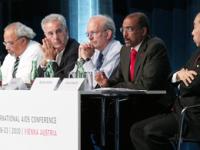
From left: Ambassador Eric Goosby, United States Global AIDS Coordinator; Professor Michel D. Kazatchkine; Executive Director, The Global Fund to Fight AIDS, TB and Malaria; Anthony Lake, Executive Director of UNICEF; Michel Sidibé, Executive Director of UNAIDS; Hiroki Nakatami, Assistant Director General of WHO; at the UNAIDS PMTCT Satellite at the 18th International AIDS Conference in Vienna, Austria on 19 July 2010. Credit: UNAIDS/Heimo Aga
UNAIDS hosted a satellite at AIDS 2010 on preventing mother-to-child transmission of HIV 19 July. It was co-chaired by Antony Lake, Executive Director of UNICEF and Hiroki Nakatani, Assistant Director General of World Health Organization (WHO) and coordinated by Gottfried Hirnschall, Director of the HIV department (WHO). Opening remarks were delivered by Michel Sidibé, Executive Director of UNAIDS and Michel Kazatchkine, Executive Director of the Global Fund to Fight AIDS, TB and Malaria, and Ambassador Eric Goosby, United States Global AIDS Coordinator.
The call to eliminate mother-to-child transmission of HIV was first made by UNAIDS Executive Director Michel Sidibé and he has since been joined by leaders of nations, heads of multilateral, bilateral, regional and national bodies, presidents of foundations, members of civil society, and even captains of football teams in the FIFA 2010 World Cup.
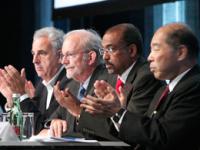
From left: Professor Michel D. Kazatchkine; Executive Director, The Global Fund to Fight AIDS, TB and Malaria; Anthony Lake, Executive Director of UNICEF; Michel Sidibé, Executive Director of UNAIDS; Hiroki Nakatami, Assistant Director General of WHO; at the UNAIDS PMTCT Satellite at the 18th International AIDS Conference in Vienna, Austria on 19 July 2010. Credit: UNAIDS/Heimo Aga
Addressing the satellite, Mr Sidibé noted that many African countries like Botswana, Namibia and Swaziland are already leading the way towards virtual elimination if mother-to-child transmission, and many others are close behind.
This groundswell of support is lending hope to the possibility that transmission of HIV from mothers to children can be virtually eliminated in the highest-burden countries by 2015. At the same time, the WHO has issued new recommendations on the use of antiretroviral drugs for treating pregnant women and preventing HIV infection in infants and HIV and infant feeding. The main purpose of the new recommendations is to improve maternal and child survival by drastically reducing risk to around 5%, including in breastfeeding populations.
WHO, UNICEF, UNFPA and UNAIDS have developed a PMTCT strategic vision through the UNAIDS Outcome Framework for 2009-2011, aiming at defining joint commitment to support scale up of PMTCT of HIV services and integration with maternal, newborn and child and reproductive health services.
A long way to go
Despite this momentum, many nations have a long way to go. The majority of pregnant women in low- and middle-income countries do not know their HIV status. This knowledge has risen from 7% in 2004 to 21% in 2008. Also, the majority of HIV-positive pregnant women who need antiretrovirals (ARVs) for preventing transmission of the virus to their child. Only 45% of women in need of ARVs received it in 2008, although this is up from 10% in 2004.

UNAIDS PMTCT Satellite at the 18th International AIDS Conference in Vienna, Austria on 19 July 2010. Credit: UNAIDS/Heimo Aga
The quadrupling of the proportion of women receiving this important service is good news. But children continue to be left behind. Around 32% of infants born to HIV-positive mothers received antiretroviral for PMTCT in 2008, up from 20% in 2007 and 6% in 2004.
Update
Yesterday’s satellite provided an update on global commitments to virtual eliminate mother-to-child transmission of HIV. Participants highlighted key policy and operational considerations in implementing comprehensive PMTCT services integrated with maternal health and family planning services, including the WHO 2009 guidelines on ARV drugs for treating pregnant women and preventing HIV infection in infants which were reviewed by Nathan Shaffer of WHO.
To put theory into perspective country experience was shared by Mpolai Moteetee, the PMTCT focal point in Lesotho's Ministry of Health and Social Welfare Family Health Division who spoke of the experience of rapid scale-up of PMTCT services in Lesotho.
Marie Deschamps of GHESKIO (Groupe Haïtien d’étude du Sarcome de Kaposi et des Infectieuses Opportunistes) presented on the importance of integration of broad range of services of maternal health, family planning, PMTCT, and HIV treatment for maternal and child survival
Lilian Mworeko of ICW (International Community of Women with HIV/AIDS) Uganda shared her personal perspective as an activist and a person living with HIV.
Mother-Baby Pack
UNICEF, in collaboration with WHO and global partners, has developed an innovative simple, user-friendly and affordable packaging mechanism to deliver PMTCT preventive medications, the Mother-Baby Pack (MBP). Chewe Luo, a UNICEF Senior Advisor, presented the Pack which contains medicines for prophylaxis, ARVs and Co-trimoxazole, for the mother and for the infant in line with WHO 2010 PMTCT Guidelines. It also intends to help streamline procurement and supply management of PMTCT medicines.
The Global Fund has also declared preventing mother-to-child transmission (PMTCT) a priority and is currently assessing the possibility of reprogramming existing grants to accelerate scale-up in 20 countries (Angola, Botswana, Burundi, Cameroon, Côte d'Ivoire, the Democratic Republic of Congo, Ethiopia, Ghana, Kenya, Lesotho, Mozambique, Malawi, Namibia, Nigeria, South Africa, Swaziland, Tanzania, Uganda, Zambia and Zimbabwe).
Caroline Ryan of PEPFAR shared how their efforts will contribute towards virtual eiliminaiton. PEPFAR II has aligned its target to the UNGASS targets aiming to provide PMTCT services to 80% of all pregnant women living with HIV and exposed infants in their country programmes. All these commitments fall within the context of integrated programming for improved maternal and child health and survival coordinated with current US Global Health Initiative.
Closing remarks at the session were delivered by Antony Lake and Hiroki Nakatani.
Right Hand Content
Publications:
UNAIDS Outlook Report 2010 (pdf, 6 Mb)
UNAIDS Outcome Framework 2009-2011 (pdf, 388 Kb)


